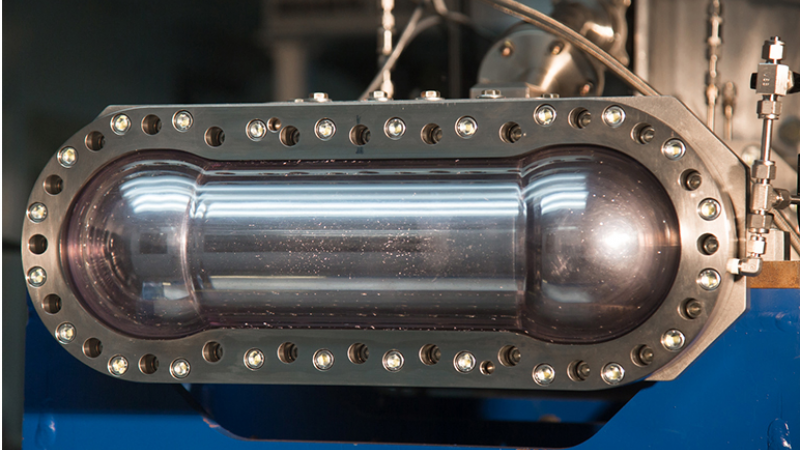ORNL researchers from the Spallation Neutron Source recently conducted tests of a mercury target gas injection system. They are working to prolong target vessel lifetimes for anticipated higher SNS beam power. Measures to extend vessel lifetime are needed as power increases to and beyond 1.4 MW – the present capability of the accelerator. Up to 2 MW is possible if a future second target station project comes online.
The SNS high-energy proton pulses impact the heavy-metal (mercury) target, creating pulses of neutrons by the spallation process. The neutrons are then slowed down in moderators and guided to highly specialized instruments for conducting experiments. Neutrons of different energies are used in a wide variety of experiments for understanding the structure and properties of materials, macromolecular and biological systems, and the fundamental physics of the neutron.
One expected limitation on the lifetime of the mercury target vessel is cavitation damage resulting from the pressure pulses that are created in the mercury from the pulsed proton beam. Cavitation is the process in which vapor bubbles are formed by low to negative liquid pressures. Collapsing mercury vapor cavitation bubbles erode the SNS stainless steel target vessel surface. Although it is not known whether cavitation damage limits the target lifetimes at the current power level of 1 to 1.4 MW, a large horizontal crack has developed in each target vessel on an internal wall that was initiated by the cavitation damage. Because the wall is internal, no leaks have been attributed to this damaged wall at current beam powers.
In this image, gas bubbles are seen in a prototypical mercury target experiment with a transparent beam entrance window. The gas bubbles have been injected near the back of the target through tiny orifices that are designed to generate small bubbles that should more effectively attenuate the negative pressures that lead to cavitation. Although there is no beam in this experiment, by measuring the injected gas bubble sizes and volume fraction, the researchers hope to estimate how much mitigation a particular bubble generator might provide to a real target.





